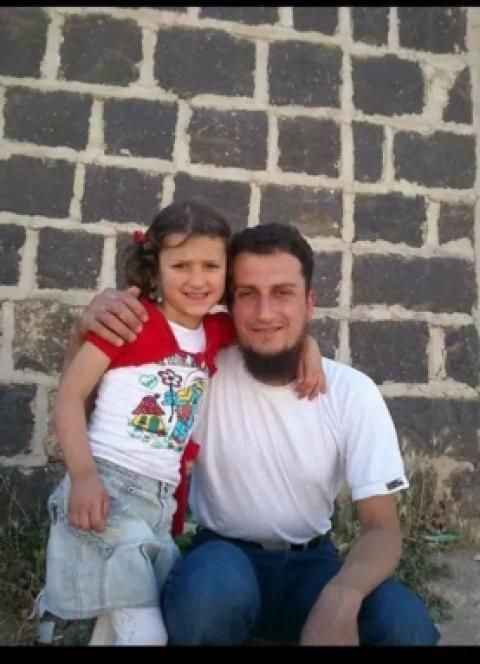For years, I’ve tried to get more people—and especially Americans, citizens of the most militaristic nation on Earth--to agree with me that war that must be abolished. One simple--some would say simplistic--argument I’ve tried is this: war is wrong because killing children is wrong, and children are inevitably killed in wars. If I believed in moral absolutes, not killing kids would be a leading candidate.
The world recently reacted with horror and pity to a photograph of a three-year-old boy, Aylan, who drowned while fleeing Syria. Aylan was an indirect victim of war in Syria. Since 9/11, U.S.-led forces have killed—directly, not indirectly--more than a thousand children in Syria and other war zones around the world. To my mind, each one of these victims should provoke universal horror, pity and condemnation.
Various nonprofit watchdog groups try to keep count of children killed by U.S. and allied forces by tracking media, government and non-governmental-organization (NGO) reports. According to Iraq Body Count, between 2003 and 2011, U.S. coalition forces killed at least 1,201 children in Iraq alone.
Airwars.org estimates that more recent attacks by U.S.-allied forces against Islamic forces in Iraq and Syria have killed between 536 and 1,550 civilians, including an unknown number of children. According to a recent United Nations report, U.S. and allied forces killed 24 children in Afghanistan in 2014. The Bureau of Investigative Journalism estimates that U.S. drone strikes in Pakistan over the past decade have killed between 172 and 207 children.
These documented cases are just a tiny fraction of all child casualties of U.S.-led attacks, emphasizes Neta Crawford, a political scientist at Boston University. Author of Accountability for Killing: Moral Responsibility for Collateral Damage in America's Post-9/11 Wars, Crawford tracks civilian casualties of U.S. wars for the Costs of War project, which I often cite on this blog.
Estimating civilian casualties of U.S. military operations is extremely difficult, Crawford told me by email. “There was essentially no record kept in Afghanistan and Pakistan for a few years of any U.S.-caused civilian casualties, and most especially the killing of children.” Some of the best-documented cases of child casualties involve U.S. drone strikes, which “aren’t the main source of civilian killing in these wars,” Crawford points out.
She adds: “Most children killed and injured directly by U.S. forces and their allies were killed the same way as their parents: they died when bombs fell; when they were caught in ‘cross-fire’; shot in night raids; shot at check-points and run over by U.S. convoys who speed through the streets and roads. The roadside deaths are often not recorded unless the U.S. gives some compensation to the families.”
Crawford adds that “the harm to children in war is also indirect--morbidity and mortality due to the destruction of infrastructure which impairs delivery of medical care, makes drinking water unsafe, and makes food scarce.”
Unfortunately, many people react to the killing of children with a shrug or a cheer. Americans flocked to American Sniper, which lionizes a soldier who, in the opening scene, shoots an Iraqi boy and his mother. (See my critique of the film here.) When I object to the U.S. military killing children, I often hear three counter-arguments. Here they are, with my responses:
Argument 1: Children are often killers themselves, whom our troops kill in self-defense. This is the view advanced implicitly in American Sniper. The sniper, Navy SEAL Chris Kyle, shoots a boy who is threatening U.S. soldiers with a bomb. The phenomenon of child warriors is all too real. According to the United Nations, “hundreds of thousands of children are used as soldiers in armed conflicts around the world.” But child soldiers are victims, who should if possible be rescued and rehabilitated, not killed. Moreover, the vast majority of children killed by U.S. forces are not suspected combatants. They are “collateral damage” resulting from U.S. attacks on adult targets.
Argument 2. Our enemies kill children too. The Islamic State of Iraq and Syria (ISIS), Boko Haram and other militant groups have indeed committed atrocities against children, according the United Nations. But we abhor these groups, supposedly, because we find their brutal treatment of civilians (among other acts) inexcusable. Their behavior cannot excuse ours. Moreover, when we commit atrocities, we provide ISIS and other groups with a provocation and justification for their behavior. We should set a moral example for militant groups, not stoop to their behavior.
Argument 3. We don’t kill children on purpose. When presented with irrefutable evidence that its forces have killed children or other civilians, the U.S. occasionally apologizes (see below), while insisting that the deaths were unintentional. But when our forces kill children over and over again, claims that the killings are unintentional become hollow, a cynical evasion of responsibility. We would be outraged if American police, in attacks on suspected criminals, routinely killed children who happened to be nearby. We should be equally outraged when U.S. troops kill children in their operations.
Last November, for example, an air strike by the U.S.-led alliance aimed at a suspected “explosives-making and storage facility” in Syria “likely caused the deaths of two civilian children,” the Pentagon has acknowledged. One was a five year old girl, Daniya Ali Al Haj Qaddour, who poses with her father, Ali Saeed Al Haj Qaddoura, a suspected militant, in the photo above. Airwar.org has posted a video of Daniya and the other child killed in the attack here. Pentagon officials admit that the deaths of the two children violate “international humanitarian law” and state that the alliance should “ensure that it doesn’t happen again.”
At this point, many readers are no doubt thinking that war is a messy, unpredictable business, which always ends up hurting innocent people, such as children. Exactly. That is why war must end.


Spread the word